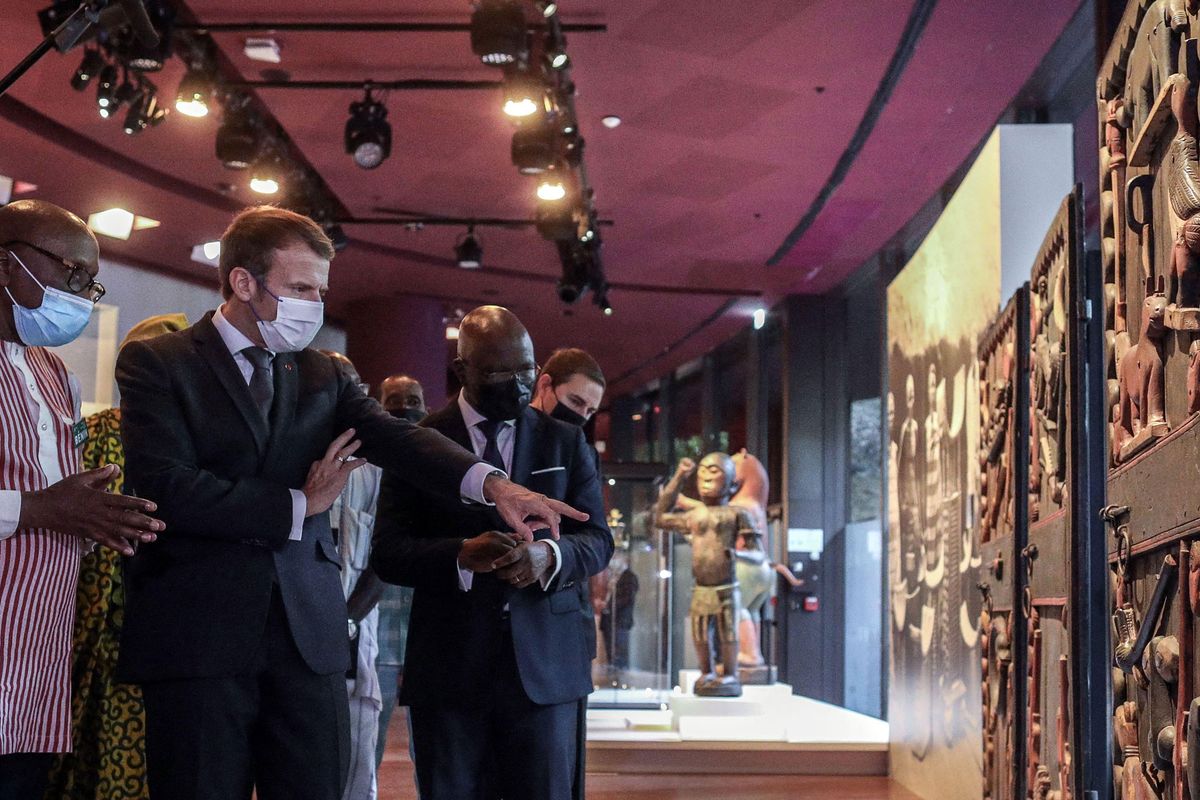The French president Emmanuel Macron stunned the museum world during a visit to west Africa in November 2017 when he called for the return of African heritage to the continent. A year later, a report he commissioned from the scholars Bénédicte Savoy and Felwine Sarr recommended large-scale returns of sub-Saharan African artefacts from French museum collections. Macron was hailed for triggering a restitution movement that has opened the way for returns of colonial-era objects from collections in Western countries including Germany, Belgium, the UK and the US.
Yet France, where culture remains the preserve of the State, has only repatriated 28 African objects since Macron’s 2017 proclamation: one apiece to Senegal and Madagascar and 26 to Benin. Furthermore, a draft law intended to create a comprehensive procedure for restitution from French museums is now mired in confusion and conflict in the French Parliament.
On 10 January, France’s Senate approved a bill—proposed by senators Catherine Morin-Desailly, Max Brisson and Pierre Ouzoulias—to set up a national expert commission that would be consulted on any future non-European restitution cases. The draft law also proposes to facilitate the restitution of human remains in French public collections.
No date has yet been fixed for the bill to be debated in the National Assembly, and it is unlikely to be examined by the house before the French presidential elections in April. In any case, Macron’s government immediately expressed its opposition to the proposal. The culture minister Roselyne Bachelot had already warned in November 2020, during a hearing at the Senate, that the government wanted to maintain control of restitutions, which should be decided “case by case”, without the interference of a commission. So the senators’ move is mostly symbolic. It is a way for them to protest against what is seen as the president’s top-down restitution policy to date: decisions taken for diplomatic motives without consulting Parliament.
New laws required
In France, public collections are inalienable, meaning that no objects can be deaccessioned (removed), so any disposal requires a new law which can take years to be adopted. The same restriction applies to the restitution of human remains or cultural property looted by the Nazis. All attempts to facilitate the deaccessioning of works on a broader scale have so far failed.
Now, President Macron has asked the former director of the Musée du Louvre, Jean-Luc Martinez, to establish a legislative framework for future restitutions to foreign countries. Martinez, who was last summer appointed France’s ambassador for international cooperation on cultural heritage, is starting the process with a tour that has led him to Benin, Senegal and Ivory Coast this winter. There are plans for further visits to Mali, Chad and Ethiopia.
Martinez tells The Art Newspaper he intends to submit an initial report to the president in February on France’s response to restitution claims already made by half a dozen African nations. It remains to be seen if the report will be made public. Another key initiative, Martinez says, could open up access to French museum collection archives, data and images for African countries to advance provenance research. “I am convinced that provenance is a crucial topic for museums,” he says. “The world demands to know how these objects became part of the collections.”
Facilitating provenance research in French collections—something that French museums have long resisted—could certainly be a first step to supporting future restitution claims from Africa. But some still have concerns that both French museums and the government ultimately want to avoid the full transfer of ownership of colonial-era artefacts.
Policy contradictions
Indeed, the contradictions of Macron’s restitution policy were revealed last October in a ceremony held at the Musée du quai Branly-Jacques Chirac in Paris to mark the departure of 26 statues and ceremonial objects to Benin. The objects were taken in 1892 by French troops from the royal palace of Abomey, which was set ablaze by King Behanzin, the fleeing ruler of the west African kingdom of Dahomey.
Speaking at the ceremony, Bénédicte Savoy denounced “a France that has clutched onto the inalienability of the collections for so long” and an “administration that multiplied strategies to choke public debate”. Nevertheless, in his own speech, Macron shied away from the radical pronouncements he had made in 2017. He said it would be “madness” to dismantle collections in order to “renationalise this common heritage” in Africa. Pleading for a “universal” view of culture, he argued that it would be “a terrible vision if France simply dispatched the heritage of other countries and let each take back its treasures”. Calling for cultural co-operation, exhibitions and loans, he said restitution should be limited to treasures “whose absence is psychologically the most intolerable” for their countries of origin.
Benin’s president, Patrice Talon, notably declined to attend the Quai Branly event. He told local media that he was “dissatisfied” with the 26 returns and expected a “more complete restitution”. His country submitted new demands to France, including the return of a wrought-iron statue of the voodoo god of war, Gu or Ogun, which is exhibited at the Louvre. It was recovered by a French army officer on a beach at Ouidah after a battle. Admired by Modern artists and writers in France, it was part of the famous 1935 exhibition of African art at the Museum of Modern Art in New York, photographed by Walker Evans.
More than four years have passed since Macron told university students in Burkina Faso: “Within five years I want the conditions to exist for temporary or permanent returns of African heritage to Africa.” That ambition has been thwarted by the reality of France’s still-conservative cultural politics. Observers will now have to wait for the spring elections—and Macron’s predicted second term as president—before any real progress can be made towards fulfilling his landmark pledge.


